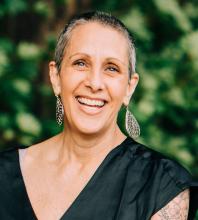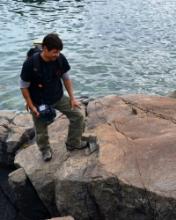Dear friends of UW Anthropology,
It has been a unique and rich experience serving as Interim Chair in the Department of Anthropology. I have had the opportunity to support stellar faculty and their research endeavors, and the department’s strong and thriving academic programs. I step down from my role as Interim Chair on June 30, 2022, and with full support of the College of Arts and Sciences and the Anthropology faculty, Dr. Sven Haakanson will begin a 5-year term as Chair of the Department of Anthropology on July 1, 2022.
Dr. Haakanson, a 2007 Macarthur Fellow, came to the University of Washington in 2013 as Curator of Native American Anthropology and was granted tenure in the Department of Anthropology in 2016. Sven has traveled an untraditional academic journey. Upon graduating from Harvard University in 2000, he returned to his home community in Alaska and served for 13 years as a museum director at the Alutiiq Museum. Sven is a productive researcher. He has given numerous invited lectures and presentations and co-curated the major new permanent exhibit in the Burke Museum, Culture is Living, has garnered over $700,000 in new grants and private donations, and $1.6 million in grants from governments and institutions.
His work falls squarely in the realm of public scholarship in that he conducts research, teaching, and service both with and for the public. His work at the Burke Museum is the epitome of public scholarship. His exhibit, Culture is Living, is a culmination of collaboration with co-curator and Teaching Professor, Holly Barker, Burke staff and design and fabrication firms, and a number of contributors from indigenous communities in Washington state, the Pacific Islands and beyond. The exhibit, visited by over 100,000 people, centers indigenous voices and privileging of indigenous languages in label text and speaks to contemporary and future issues even while using traditional material culture.
Dr. Haakanson also works with the Akhiok Kids Camp. The camp brings Native kids and family members together to explore traditional culture and share knowledge. His work is focused on angyaaq (traditional large skin boats of Kodiak Island) with the construction and launch of two new angyaaq. This work is especially important and notable in the Sugpiaq communities as it helped to revive knowledge and techniques not practiced in Kodiak since the 1840s.
Dr. Haakanson’s academic journey is unique among American archaeologists. One the one hand, he is a traditional ethnoarchaeologist and has extensive academic success with unearthing and interpreting artifacts and their place within human groups and bringing these understandings to the academic community and the public. Revitalizing a forgotten piece of technology (like a boat) or a story is the academic stuff that makes the career of an archeologist, but for Dr. Haakanson it is also a birth right and obligation. Perhaps if his academic success had stopped with his work among the Alutiiq, he would have peers in American archaeology. What makes him truly special, though, is that he has taken these experiences and these methods to connect to other indigenous groups. He has carefully and respectfully interacted with Coast Salish elders, initially finding common ground in carving and boat building, and now is working with indigenous peoples of the South Pacific. This ongoing work is clearly documented in the Culture is Living exhibit, but that exhibit is simply the tip of an iceberg of what he has accomplished among people and the marker for where his journey will take them all next.
Dr. Haakanson also demonstrates the ability to inspire, guide and mentor students through independent and creative thinking through his teaching and mentorship. He typically teaches two courses per year in the Anthropology Department (ARCHY 345 and ANTH 363) as well as instructional workshops and outreach programs through the Burke Museum. He has students work hands-on with metal, wood, bone, skins, gut and other materials, to fully experience what is involved in making objects. In ANTH 363 (Applied Visual Anthropological Practices) he teaches students how images can be used to analyze space, time, and the behaviors of a community, to preserve knowledge, and to open up dialogue with community members using photography.
The Department of Anthropology is fortunate to have Dr. Haakanson as the Incoming Chair. He is a true servant-leader, whose values-driven commitment to the collective success of the Department is unwavering.
Regards,

Diane Kendall, MPH, PhD
Interim Chair, Anthropology
Professor Speech and Hearing Sciences

